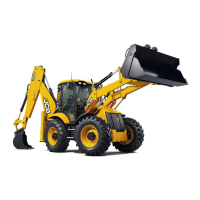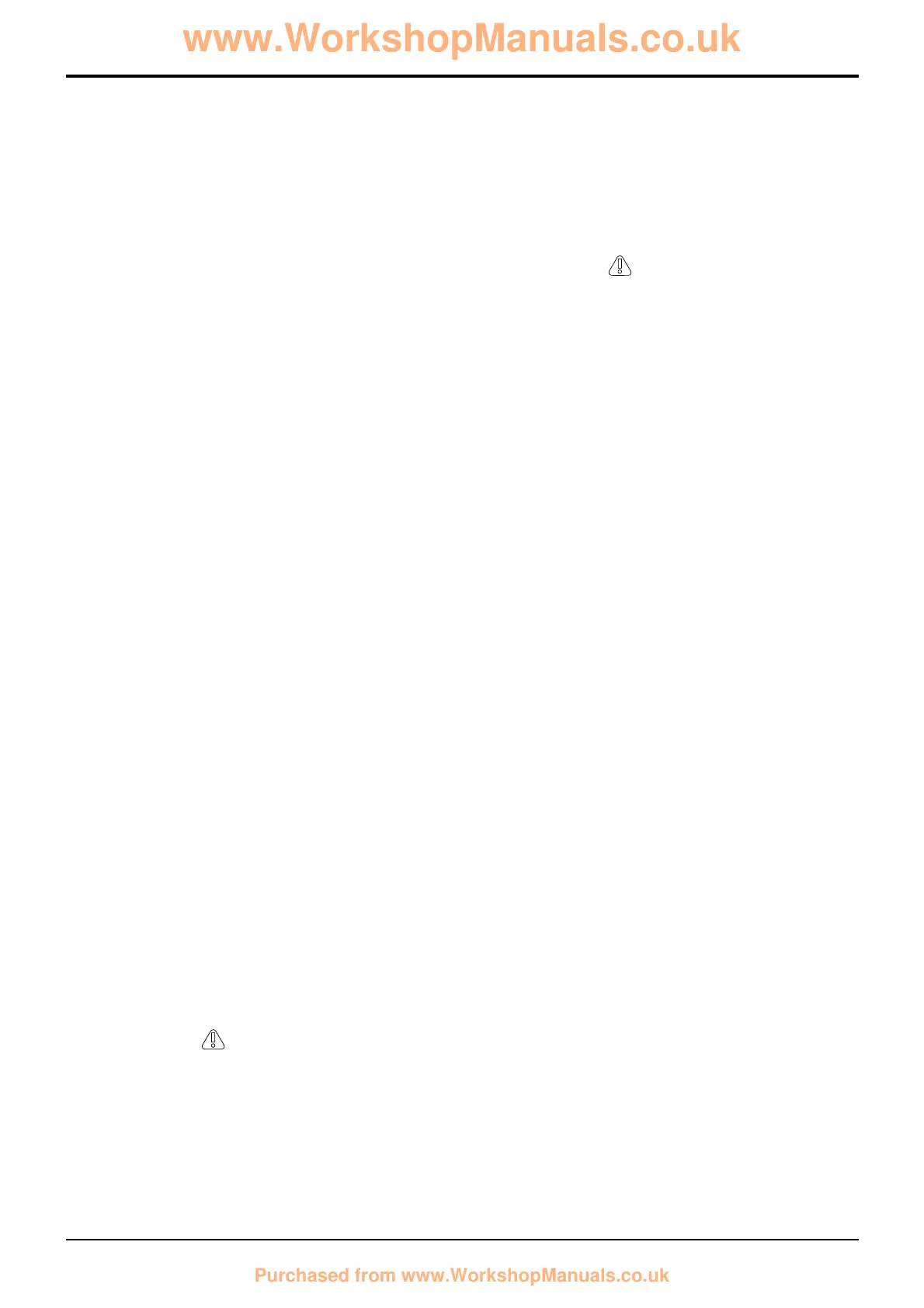Removal and Replacement
- Stabiliser Ram (Sideshift)
Removal
1 Park the machine on firm level ground, engage the
parking brake and set the transmission to neutral.
Lower the backhoe and loader end to the ground.
2 Lower the stabiliser legs until the pads are
approximately 4 in. (100mm) off the ground and stop
the engine.
3 Remove the bottom locking nut A and bolt B. Drive out
the bottom pivot pin C and allow the stabiliser foot D to
fall clear. Lift the inner leg and temporarily refit the pivot
pin C through inner leg and ram.
4 Place a block of wood underneath the stabiliser leg.
5 Remove circlips E and drive out top pivot pin F with
spacing collars G.
6 Start the engine and slowly extend the stabiliser ram so
that the dump end of the ram protrudes from the top of
the outer leg section.
7 Attach suitable lifting gear to the ram as shown at H.
Make sure that the weight of the ram is supported by
the sling and remove the bottom pivot pin C.
DANGER
Hydraulic Pressure
Hydraulic fluid at system pressure can injure you. Before
disconnecting or connecting hydraulic hoses, stop the
engine and operate the controls to release pressure
trapped in the hoses. Make sure the engine cannot be
started while the hoses are open.
INT-3-1-11/1
8 Make sure the engine is switched off, vent residual
hydraulic pressure by moving the backhoe and
stabiliser control levers back and forth.
Note: If a check valve is fitted on the ram, the system will not
vent. Extreme caution must be used when releasing
hydraulic connections - release the connections one turn and
allow the pressure to dissipate.
9 Loosen and remove the stabiliser hoses L, label the
hoses before removing (as an aid to assembly). Plug all
open orifices to prevent loss of fluid and ingress of dirt.
!
CAUTION
This component is heavy. Do not attempt to remove it
unless its weight is held by a sling. Make sure that the
sling is attached to a suitable lifting appliance.
HYD 2-3/1
10 Using suitable lifting equipment, lift the ram clear.
Replacement
Replacement is a reversal of the removal sequence.
!
WARNING
Fine jets of hydraulic fluid at high pressure can
penetrate the skin. Do not use your fingers to check for
hydraulic fluid leaks. Do not put your face close to
suspected leaks. Hold a piece of cardboard close to
suspected leaks and then inspect the cardboard for
signs of hydraulic fluid. If hydraulic fluid penetrates your
skin, get medical help immediately.
INT-3-1-10/1
Use suitable lifting appliances to locate the stabiliser ram.
After replacing or fitting the ram, connect the hydraulic
pipes, make sure that the ram and leg operate freely and do
not foul.
78 - 2
Section E
Hydraulics
9803/3280
Section E
78 - 2
Issue 1
Hydraulic Rams

